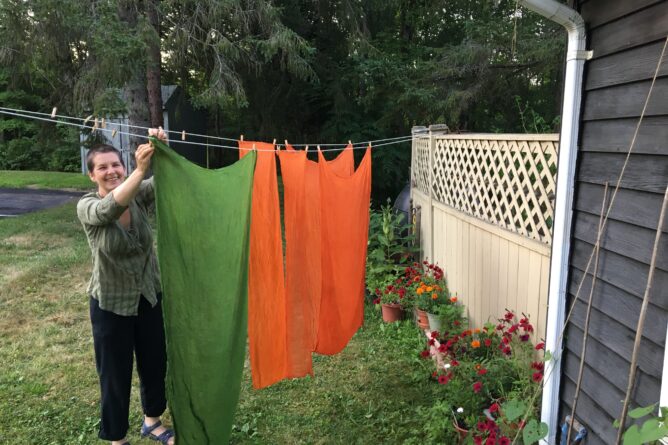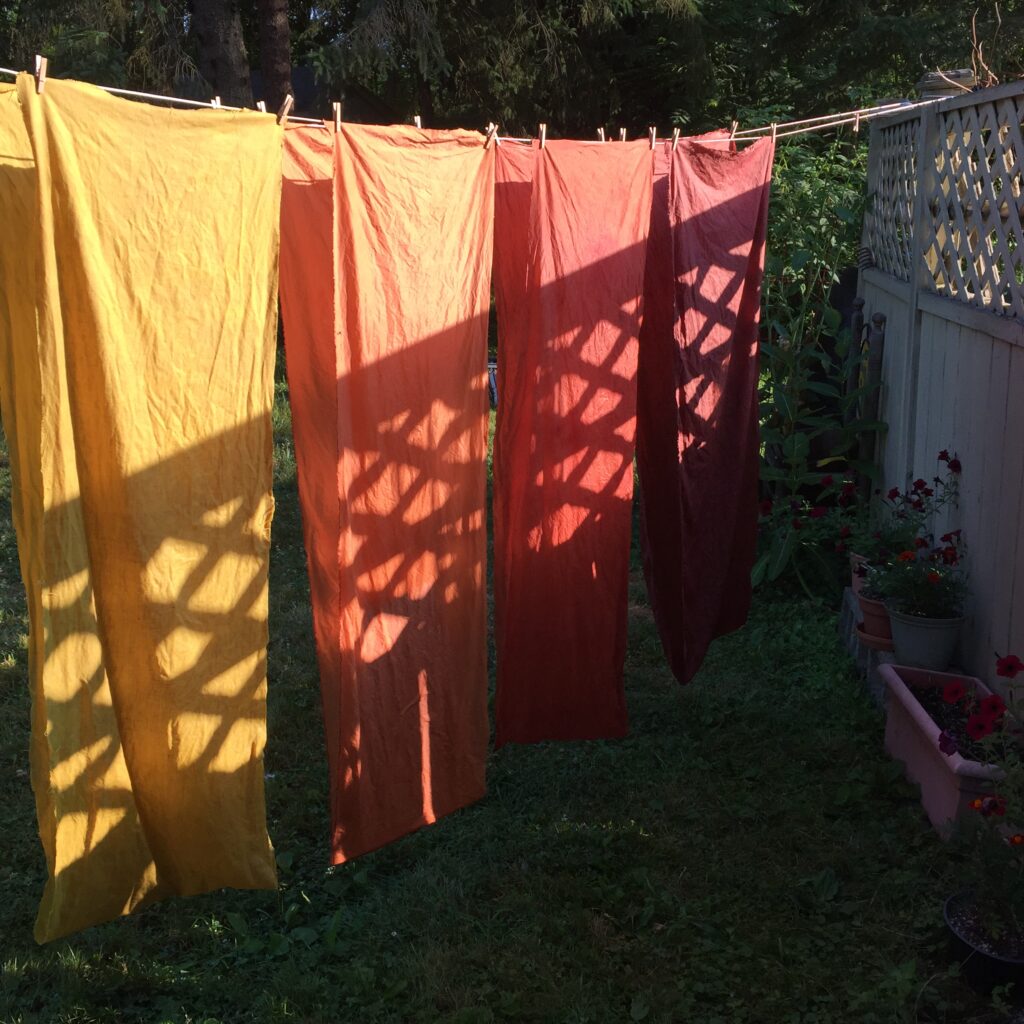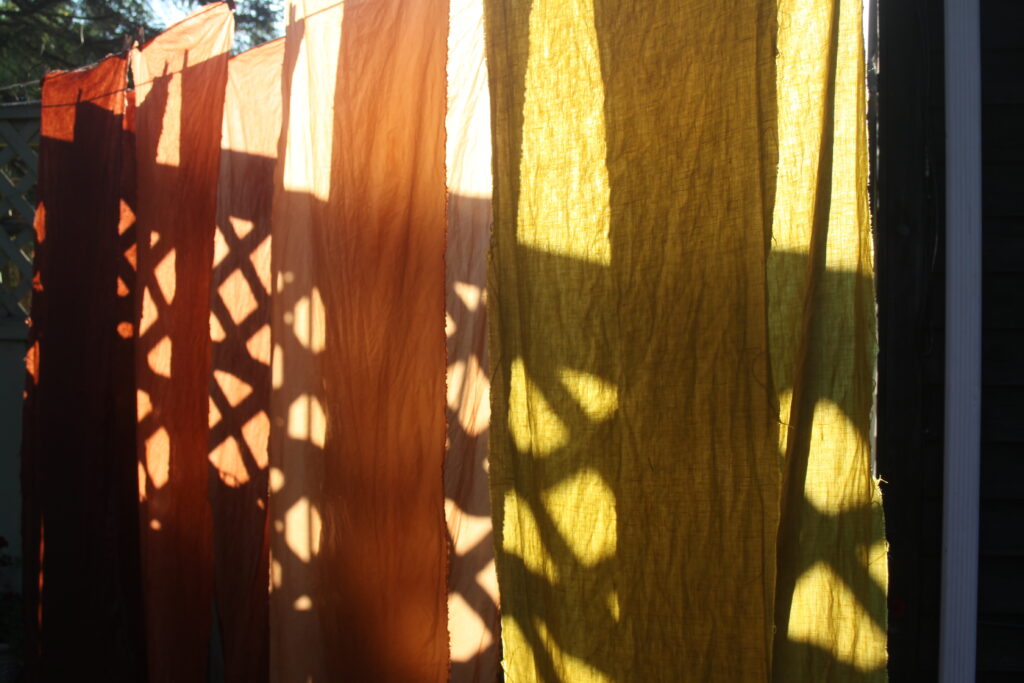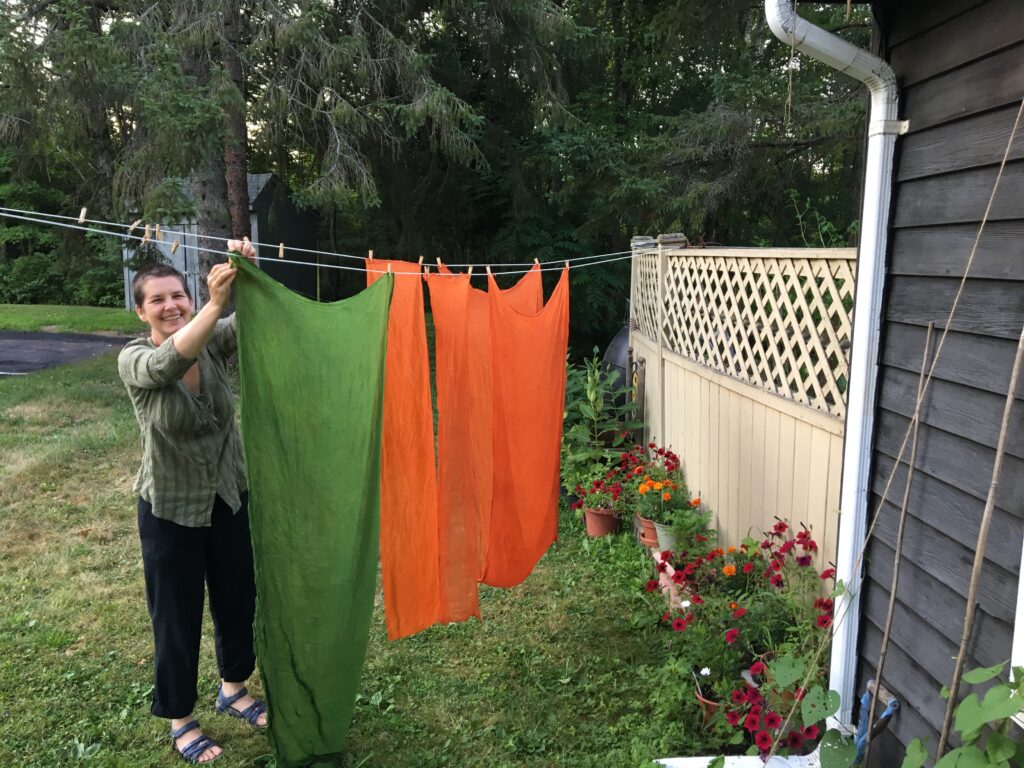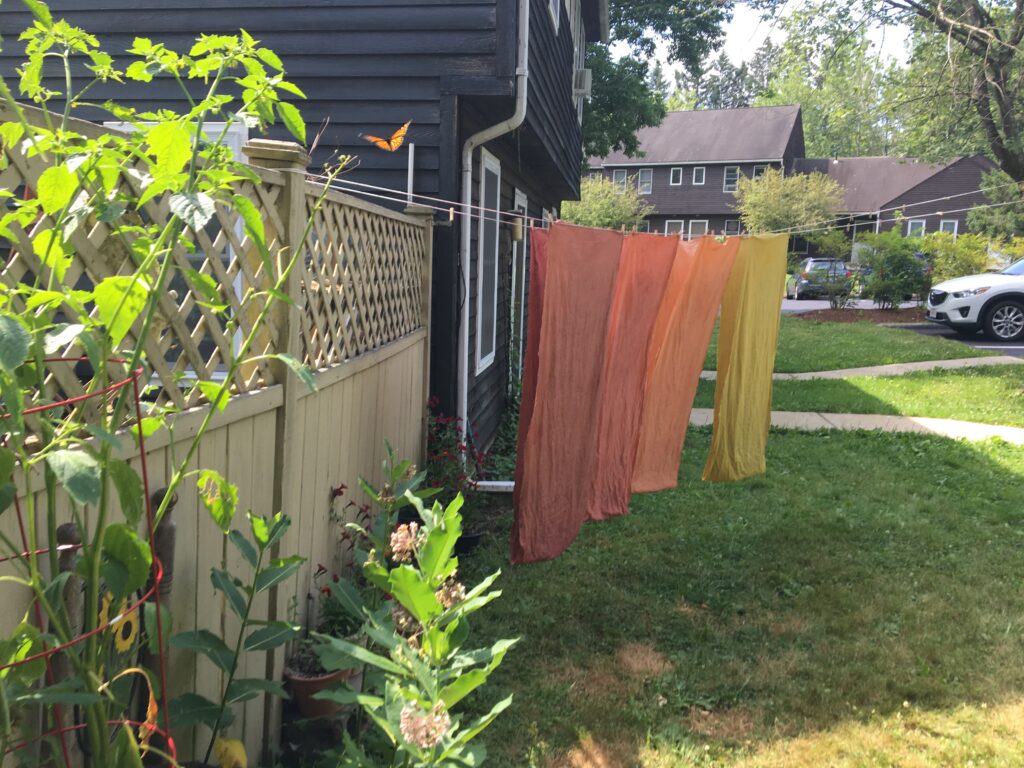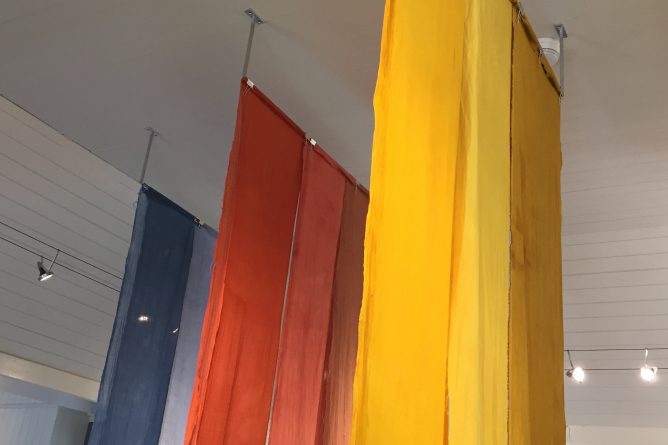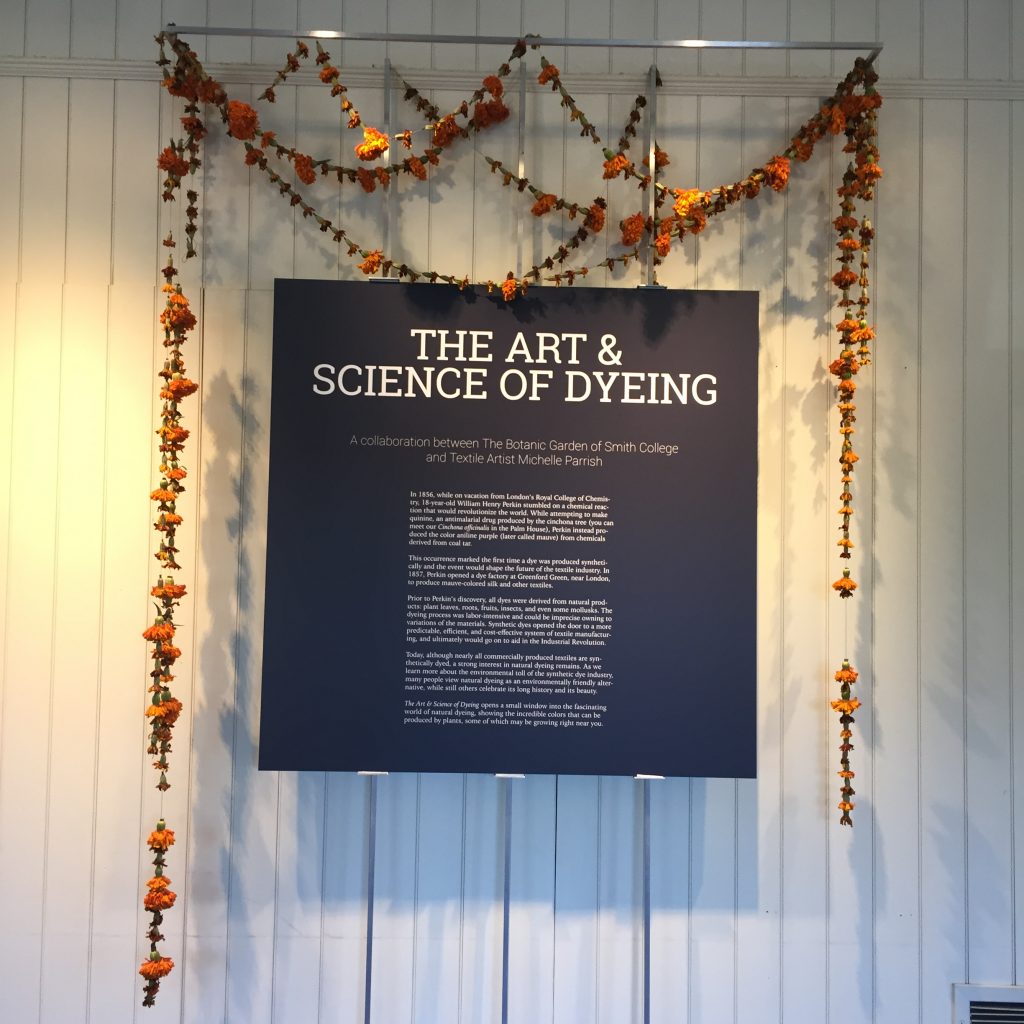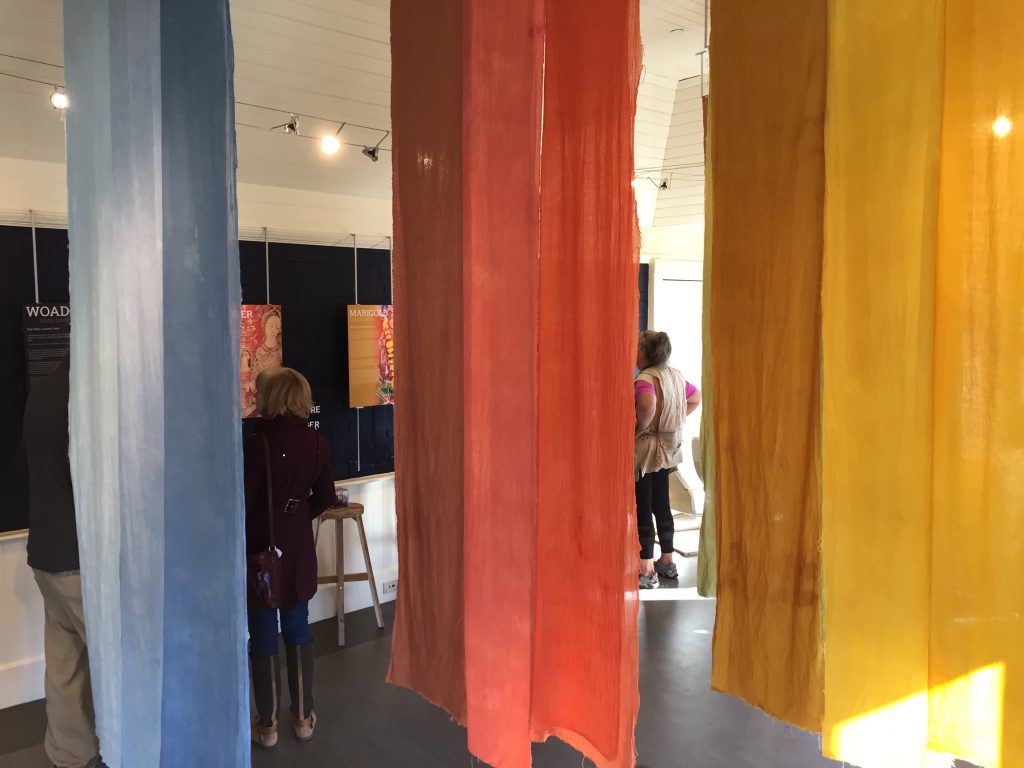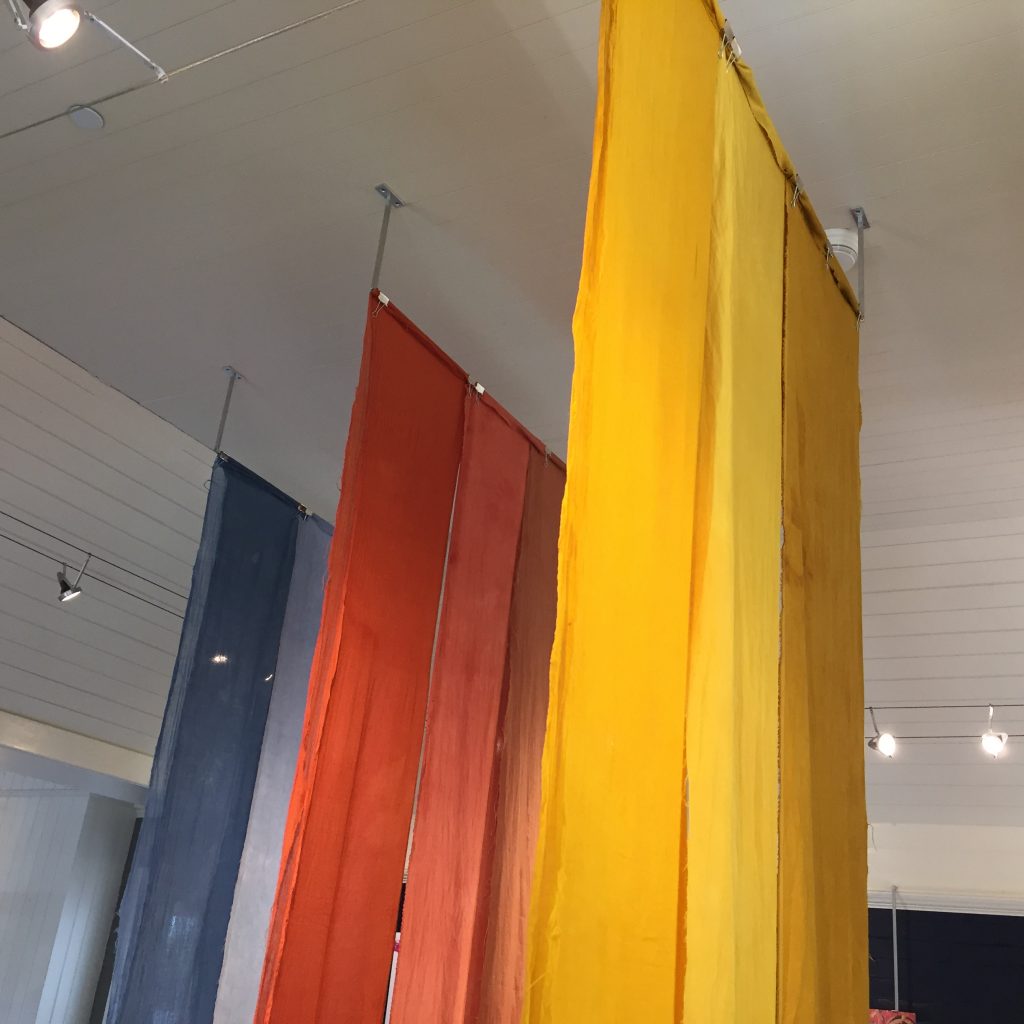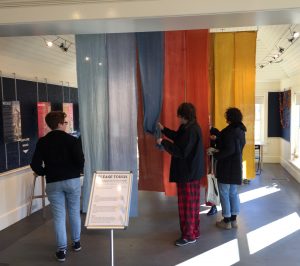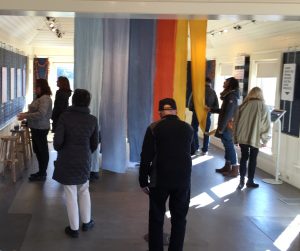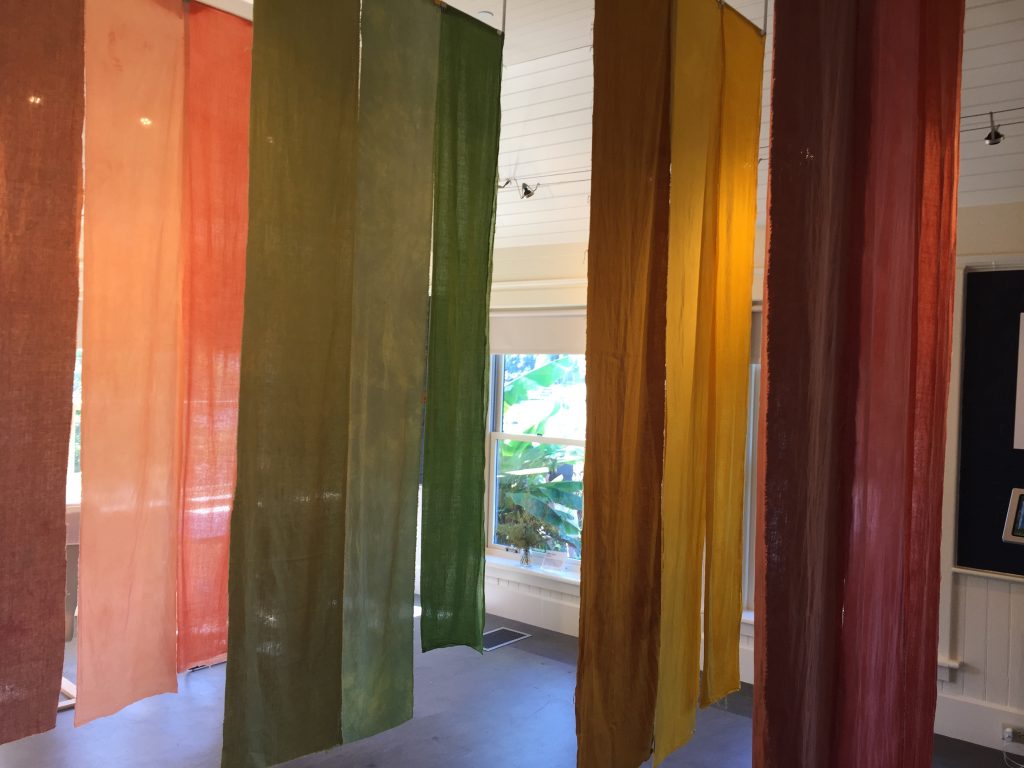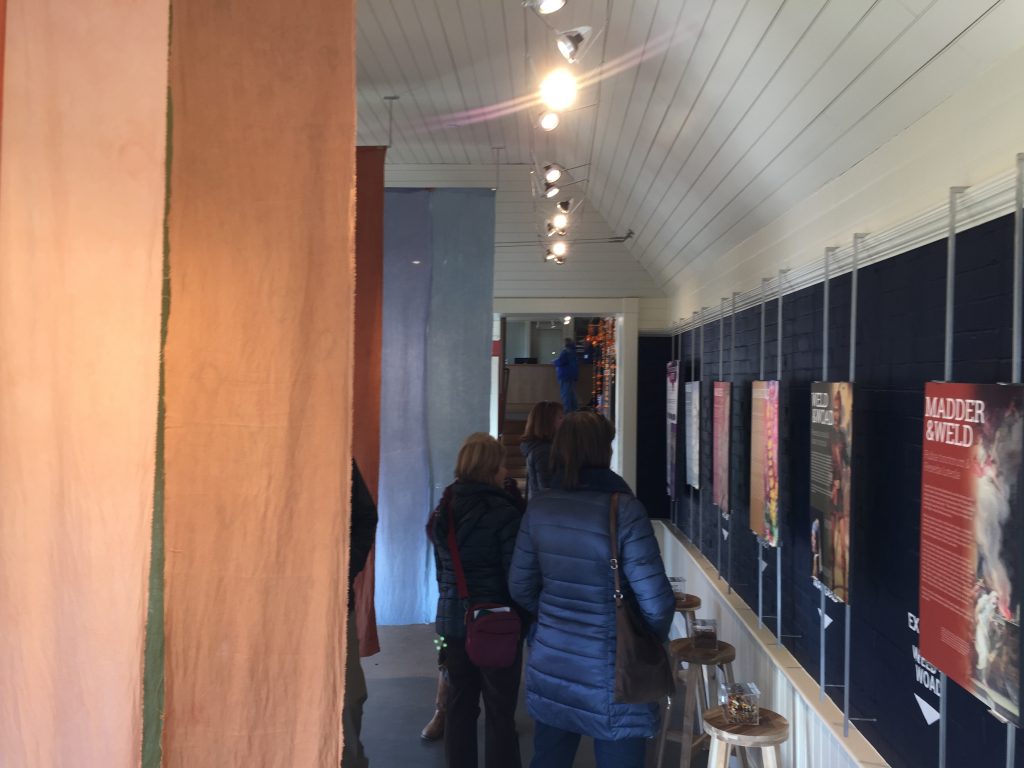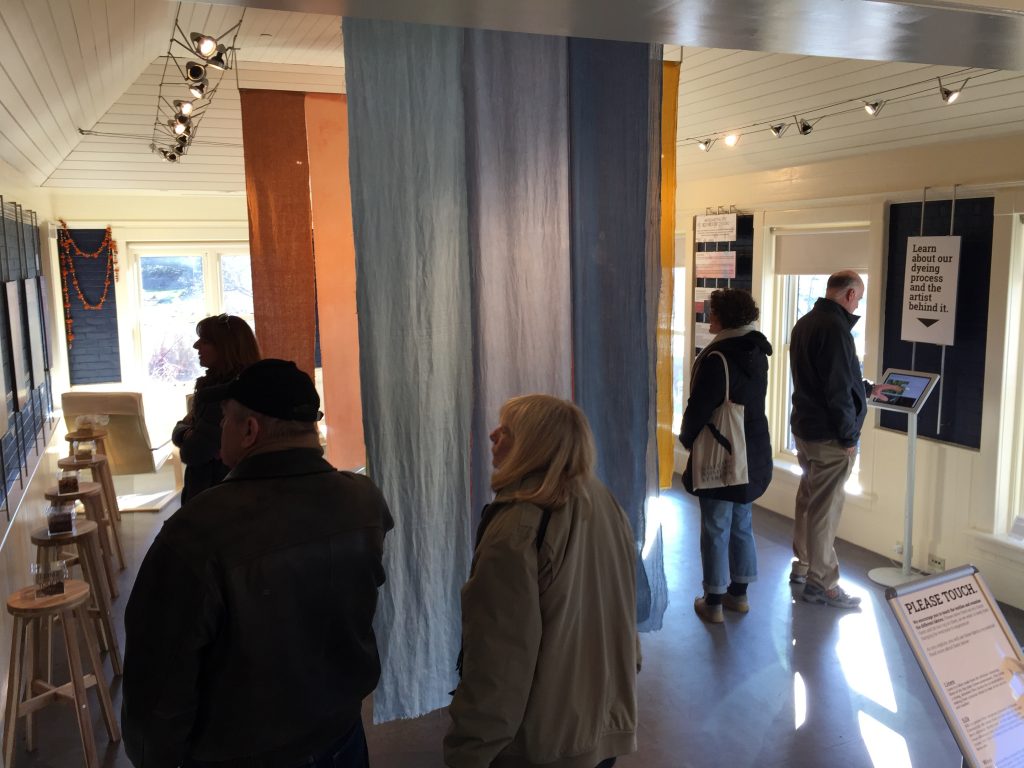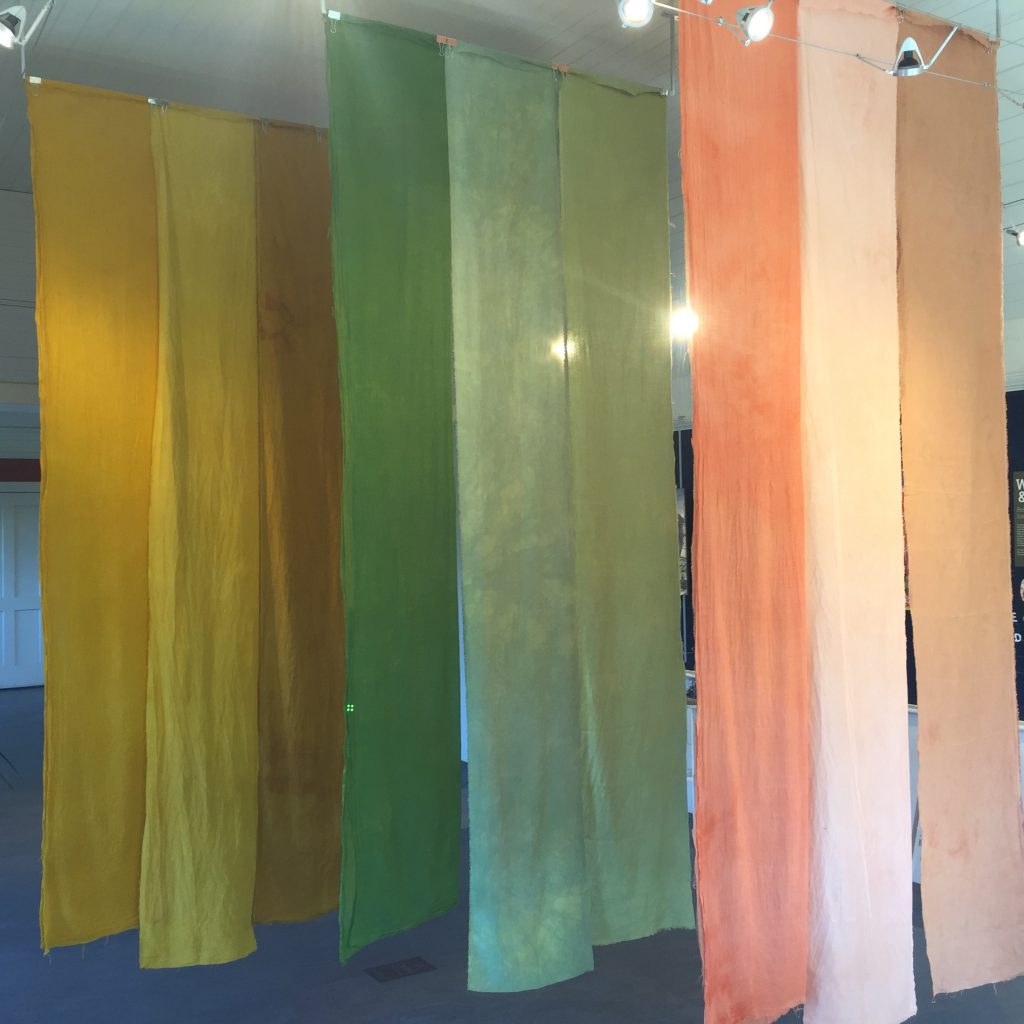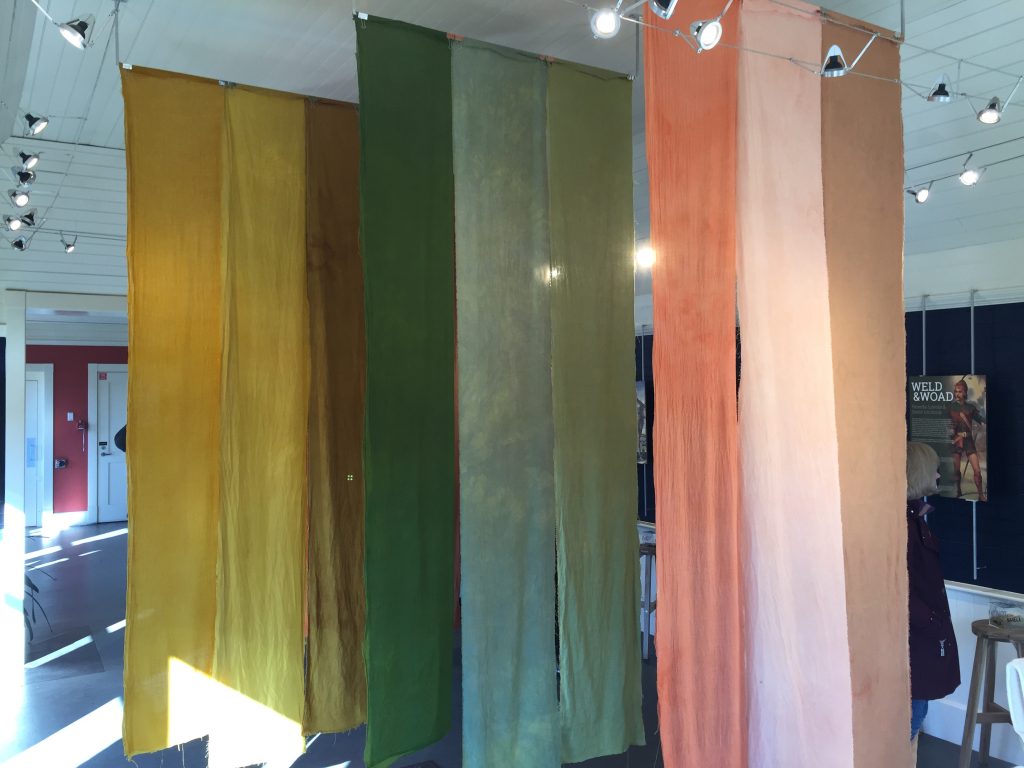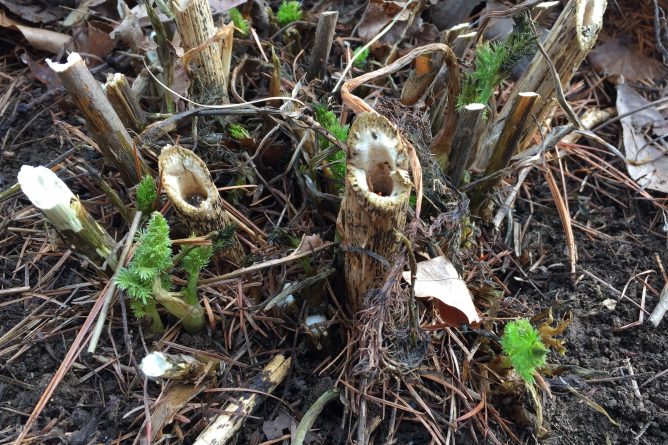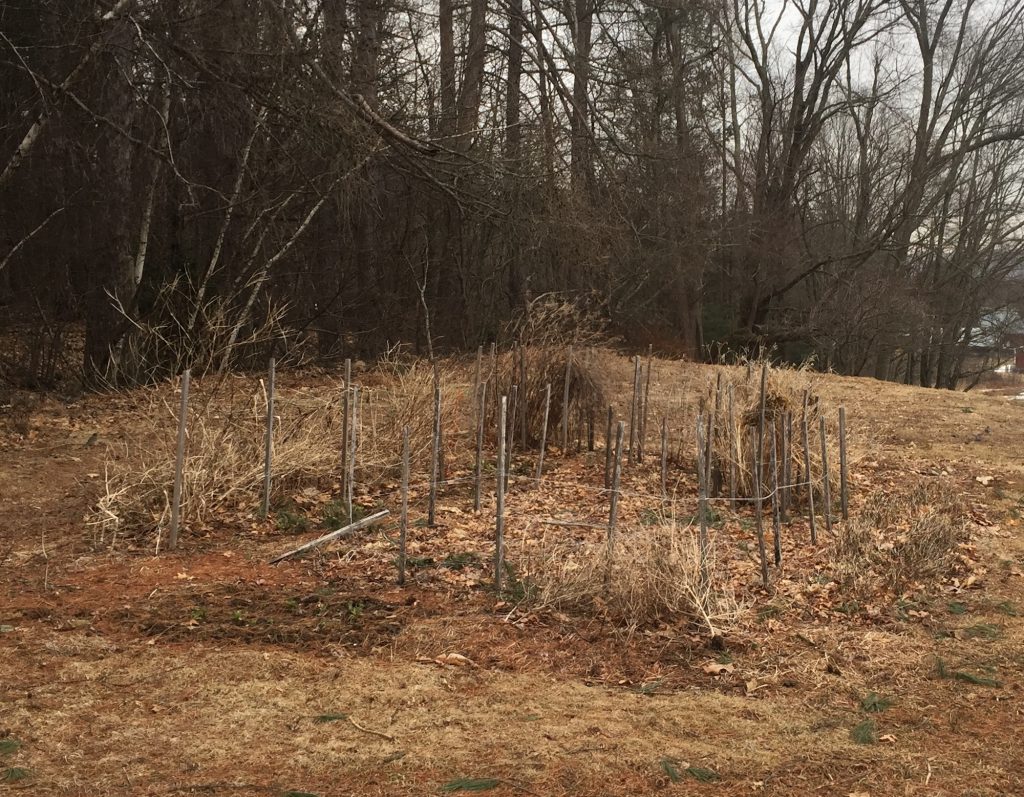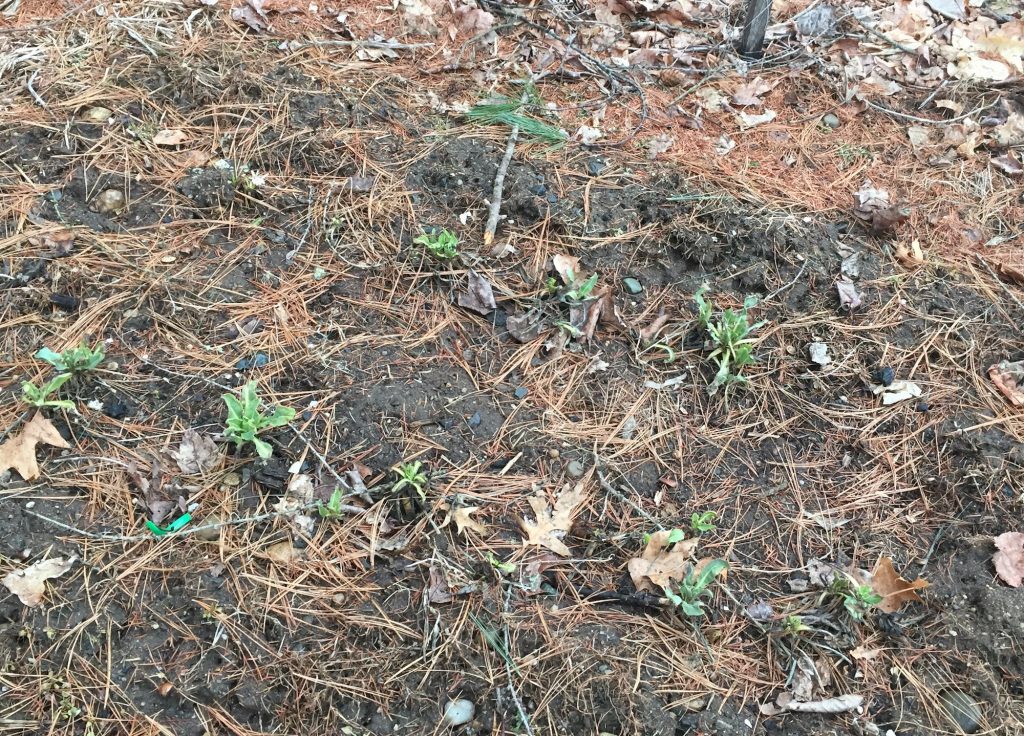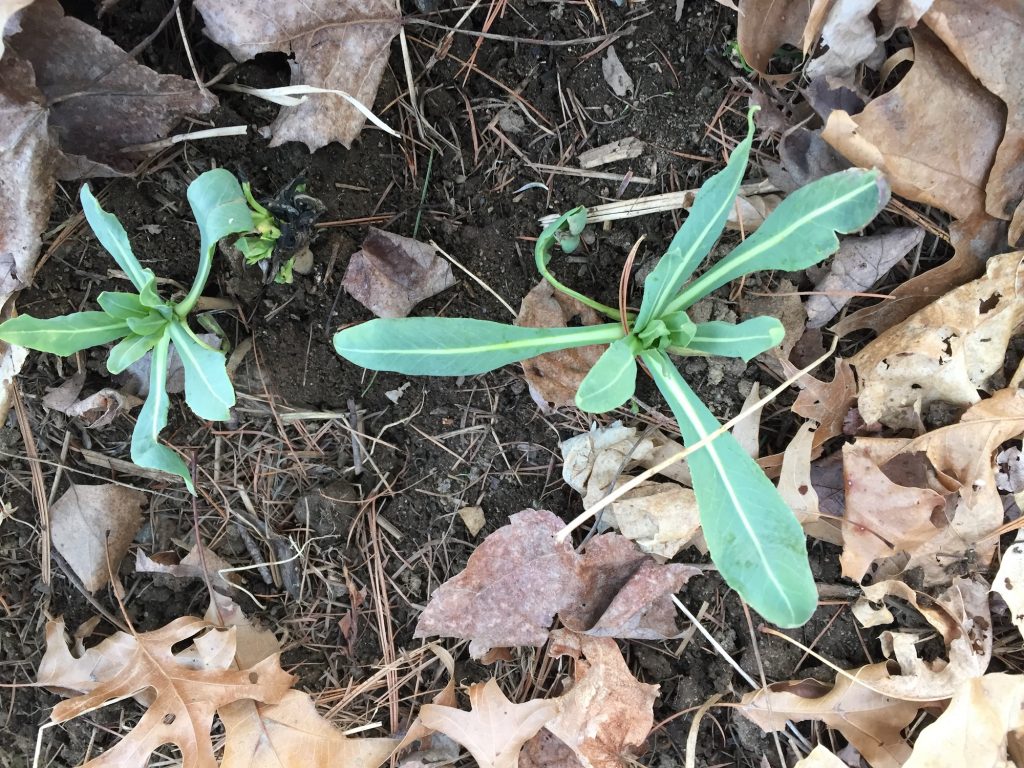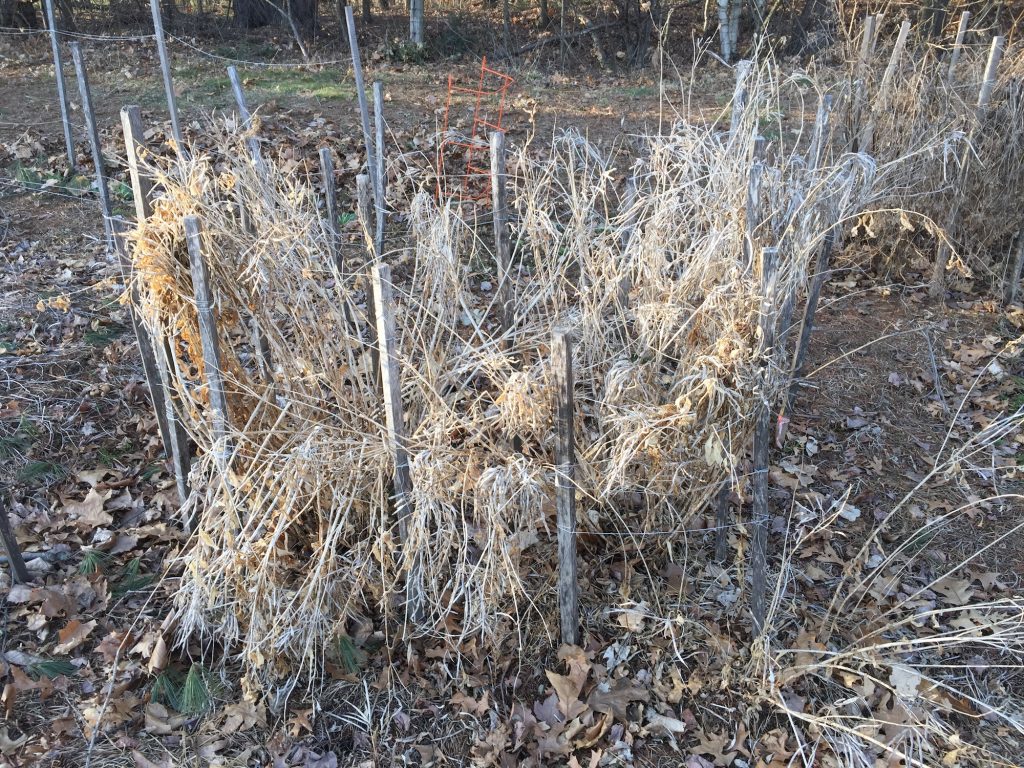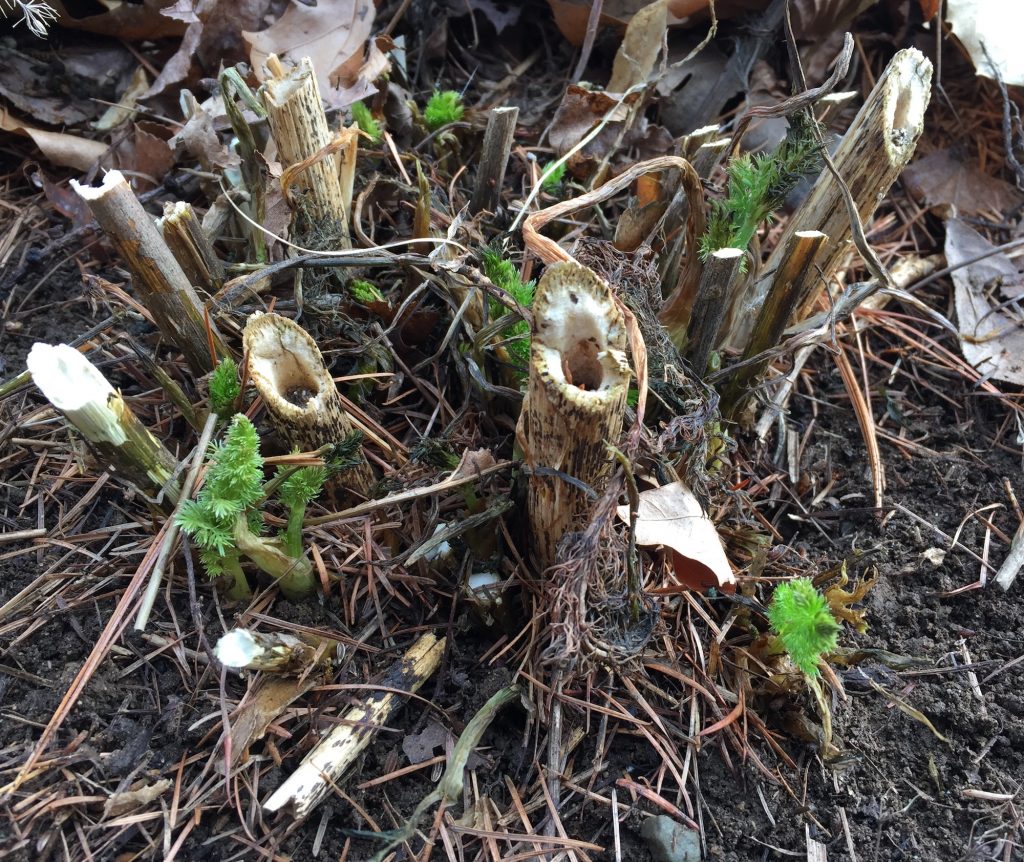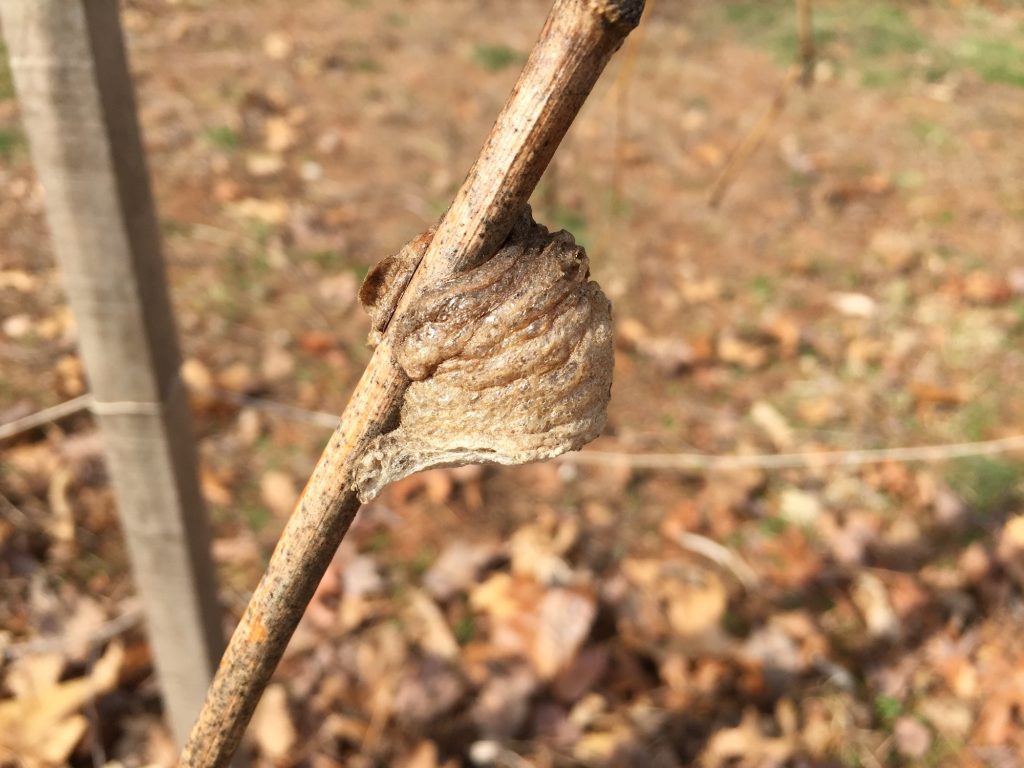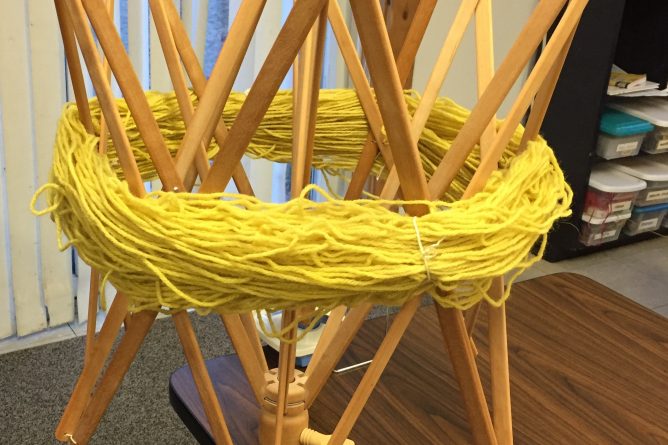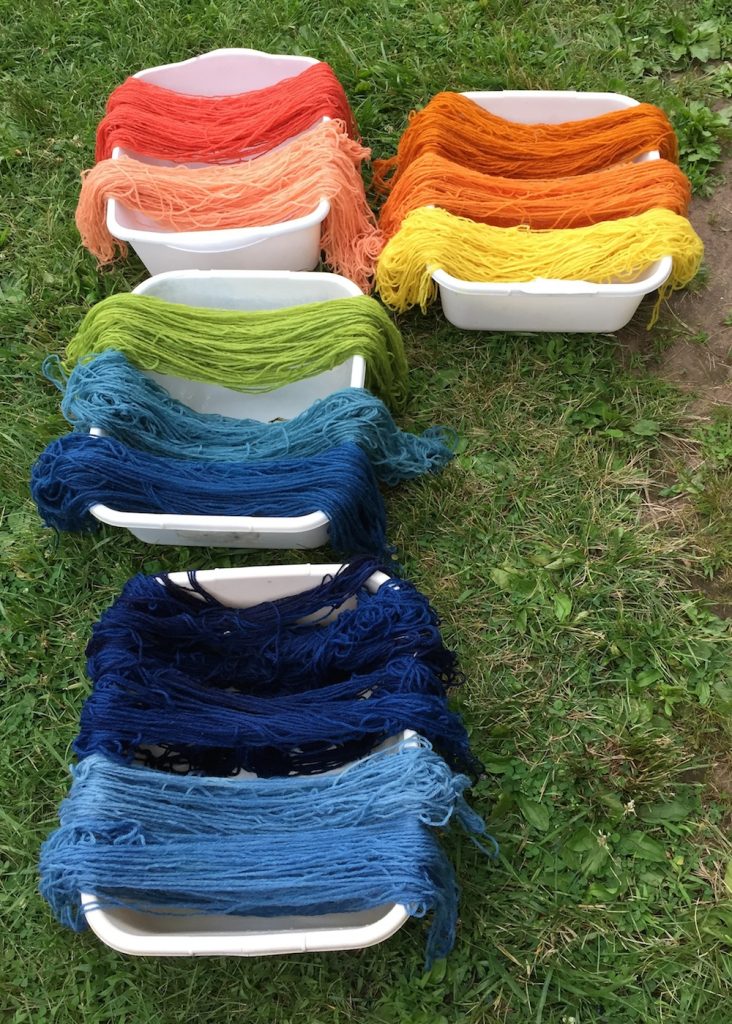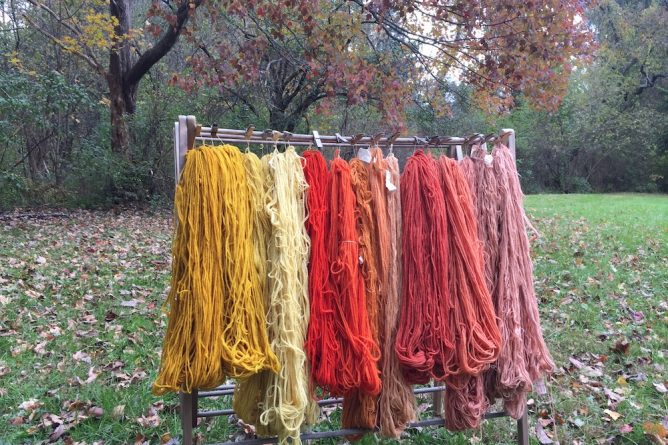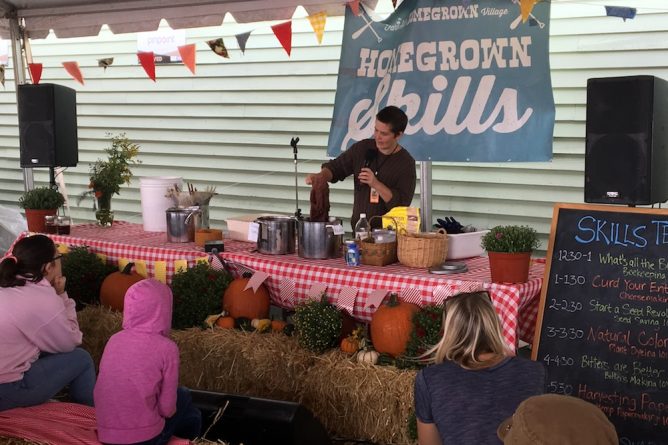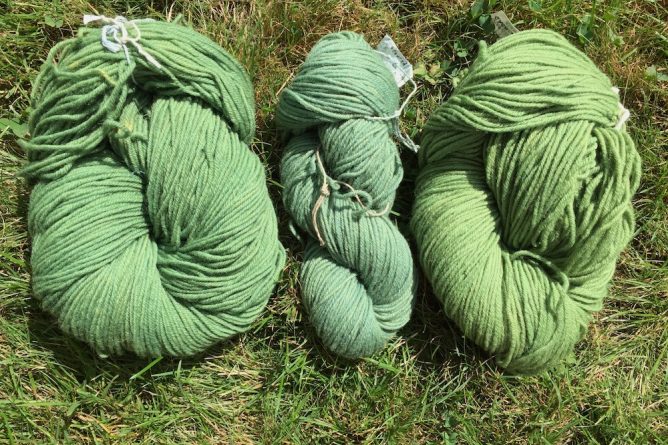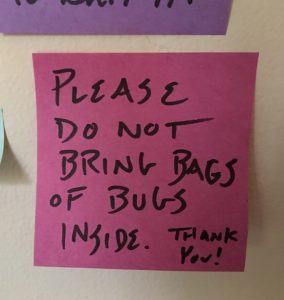Hi Folks, I’m back.
Social media is a funny thing. Back in July of 2019 I started an Instagram account @localcolordyes to get a little buzz going about the upcoming natural dye exhibition, The Art and Science of Dyeing, at the Botanic Garden at Smith College.
I had the honor of dyeing the fabric for the exhibition. Here’s some of the cloth hanging up to dry in front of our apartment.
In the photo below, I managed to get a monarch butterfly mostly in focus as it flittered over the fence! Good times.
The show was slated to run from September 23, 2019 to June 4, 2020. It opened when it was supposed to, and it was fabulous and beautiful. I felt happy about the whole experience.
I documented some of my dyeing process here on my blog and on my brand new Instagram account.
But like everything else in March of 2020, the Botanic Garden and the gallery show shut down. I have kept up my Instagram account fairly regularly since then, but I have only made a few blog posts.
I kept thinking, “I really need to get my blog up and running again.” There was no lack of topics to write about. But it just didn’t come together. My blog is kinda long-form (also maybe long winded, sorry). I tend to think a lot about what I’m trying to say and spend a lot of time re-writing the text. Whereas Instagram is simple and brief. One photo and a quick description is enough. Boom. Done. Don’t overthink it. I didn’t really have the brain-band-width to devote to longer or more complicated things, anyway, so it was fine.
I don’t hate Instagram, despite the valid reasons that other people do. I have connected with many inspiring and like-minded folks and learned interesting things on that platform.
Yesterday, though, I had a social media experience that reminded me why I love my blog so much and why I missed it. And ta da, today, a blog post! Yay.
Yesterday a notification on Instagram told me that the Frank A. Waugh Arboretum at the University of Massachusetts, Amherst had started following me. I don’t know why, but I thought it was cool. “Hello, Waugh Arboretum, pleasure to meet you. Nice trees ya’ got, there.”
But also, I was like, “Wow. How did I not know there was an arboretum at UMass?” And then I figured I would follow them back because trees are awesome and I love them and I can literally walk to UMass. I looked them up and read through their Legacy Trees Tour.
I got to their Black Walnut (Juglans nigra) entry and read this sentence: “Songbirds also rely on black walnut as an important ecological species, as its leaves host over 20 species of moths that songbirds feed on.”
20 species of moths? What???!!!
Just in case you forgot, black walnut hulls are an amazing source of natural dye. Depending on the fiber and a few other factors, you can get a range of colors from dark chocolate-y brown to golden tan. It’s rich in tannins and can function as a mordant assist on cellulose fibers, as well as giving great color in its own right. Plus, edible nuts. Glorious wood. Fancy leaf-structure. Elegant stature. An all-around rock star of trees.
A quick search led me to a page about black walnuts from the Maryland Biodiversity Project.
I am just gonna quote the whole section because it is such as bonanza of information. You can follow the links yourself to see beautiful photographs of these intriguingly-named creatures. And the many, many links are all “live.” You can just go to them directly from this page. Like links are supposed to do.
“Relationships:
Black Walnut shells produce an allelopathic substance called juglone, which inhibits the growth of plants beneath it.
Has been recorded as a host plant for Banded Hairstreak.
Host plant for various moth species including Luna Moth, Regal Moth, Imperial Moth, Walnut Sphinx Moth, Fall Webworm Moth, Walnut Caloptilia, Pecan Leafminer Moth, Monkey Slug Moth, Skiff Moth, Sad Underwing Moth, Bride Underwing Moth, Penitent Underwing Moth, Yellow-gray Underwing Moth, Widow Underwing Moth, Banded Tussock Moth, Angus’s Datana Moth, Walnut Caterpillar Moth, Red-humped Caterpillar Moth, Black-blotched Prominent Moth, Closebanded Yellowhorn Moth, Walnut Shoot Moth, Pecan Leaf Casebearer Moth, American Plum Borer, Hickory Shuckworm Moth, Pecan Bud Moth, Gray-edged Bomolocha Moth, Sleeping Baileya Moth, and Small Baileya Moth.
Decaying shells host the fungus Walnut Mycena (Database of World’s Lepidopteran Host Plants).
The fruit fly pest Walnut Husk Maggot feeds on Black Walnut fruit.
Black Walnut is a host plant for the Butternut Woollyworm.”
Everyone knows Luna Moths are gorgeous, but check out the Monkey Slug caterpillars and the Woollyworms! Even the “plainest” of these moths is made of velvet and is glorious.
Every single one of these insects is a world unto itself. I don’t mean self-contained, I mean huge and complex. Each of the birds that eats them is a world…. There is so much going on all the time, and it’s all connected.
I have personally had experience with the little squirmy larvae that live in black walnut husks, the Walnut Husk Maggots. I knew I should learn more about them and what their lives are like–and what their futures might hold if I didn’t gruesomely boil them in a dyepot. Poor little things.
But I had never imagined that so many other bugs were also intertwined with black walnut trees.
So, now when I walk under a black walnut tree I will be thinking about all these other bugs and birds, too. I now have to find out how many of these moths live here in Massachusetts.
See, this is way too much to jam into an IG post. Though you’re welcome to follow me at @localcolordyes for shorter snapshots of what I’m up to.

